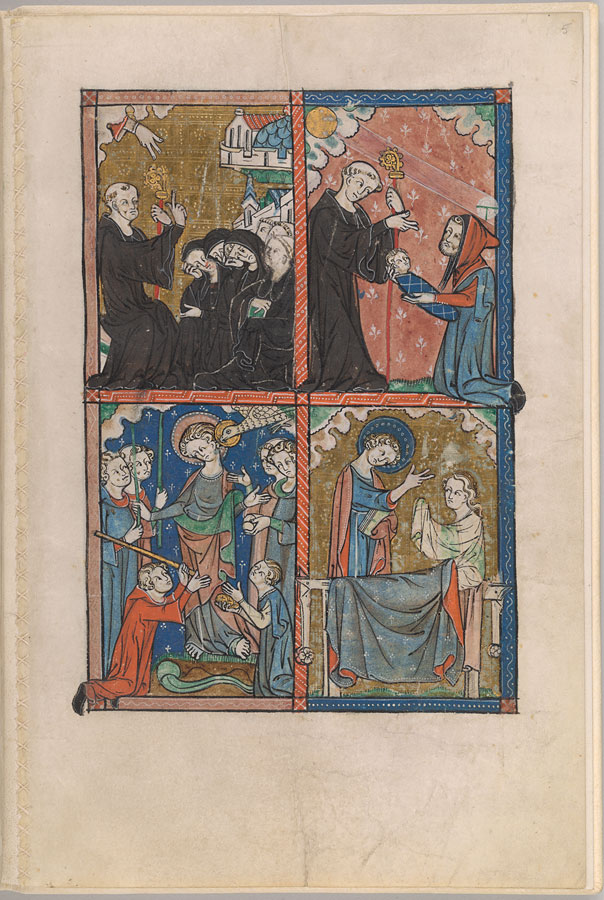Rules of the Abbey

The monastery was established in accordance with the teachings of the Benedictine order, which was founded by St Benedict. The order itself dates from 529 A.D. when Benedict established a monastery on Monte Casino. In 580 this monastery was sacked and the monks went to Rome, whence the order spread throughout Europe. The rule was not very strict, as the order had always been interested in education and several universities and many schools owe their origin to its members. The monks wore a black habit and lived by the motto laborare est orare, ‘to labour is to pray’.
About 600 A.D. communities of nuns were established and these soon became very numerous. The Carthusians are a branch of the Benedictines, who at one time had, it is said, nearly 40,000 houses throughout the world.
In England the first Benedictine was St Augustine, who established a Benedictine house at Canterbury and by the time of the Reformation there were 300 houses in England.
The Rules of St Benedict
Monastic Orders were linked together by their observance of the rule of St Benedict, which was written in the 6th century by the founder.
Although a short work it covers every aspect of life in a monastery from diet to forms of service and is noted for its humanity. The daily reading of a chapter from the rule, gave the chapter house its name.
The Novice Monk
In the early Middle Ages it was quite common for very young boys to be donated by their parents to monasteries but eventually most novices tended to be young adults. They were required to bring with them a small gift of land and were therefore mostly from better off families. There were those who became novices later in life, leaving wives and children behind. It usually took a year until a novice took his final vows and became a full member of his order.
The monastery was run along strict lines of responsibility with the Abbot at the top of the hierarchy beneath ranged many other official offices amongst which were:
The Prior – The Abbots deputy and day to day running of the Monastery.
Sub Prior – The priors deputy.
The Almoner – In charge of alms and the distribution of food to the poor.
The Cellarer
The Cellarer was responsible for the supply of food, drink and fuel to the monastery and held a very privileged position, which was open to abuse. It was also his duty to oversee all transport of goods by land or water, repairs to the abbey and all purchases for its general upkeep. He was often away on business visiting the various manors, property and land that belonged to the abbey. As he had so many duties he had a sub-cellarer to assist him.
The Chamberlain – Responsible for all clothing, the shaving of heads (every three weeks) and bathing (four times a year).
The Fraterer – In charge of the refectory and the lavatorium.
The Granger – In charge of the grain supplies and the bakehouse.
Guestmaster – Responsible for guests and their transport, the stables and the smithy.
The Infirmarian
It was the Infirmarians job to look after the sick. St Benedict wrote that ‘the demands of the sick should be patiently borne with’. But St Benedict warned of monks that feigned illness to ’embark on a protracted lunch or snuggle down in a soft bed’. The most common medieval remedy was bleeding, recommended for fever, gout, headaches, toothache and affections of all parts of the body. Blood letting was followed by a period of rest and recuperation in the Infirmary and was looked upon as a something of a holiday by the monks.
Kitchener – Responsible for the Kitchens and feeding the brothers.
Librarian – Responsible for all books, their care and repair.
Novice Master – Responsible for the education and preparation of new monks.
Precentor – Responsible for church services and the church music including leading and training the choir.
Sacristan – Security and cleanliness of the church including sacred vessels.
Borrodians – People who paid money or gave land to the abbey in exchange for being looked after in old age.
When a monk was close to death, ashes were strewn on the floor in the shape of a cross and the dying monk was placed on them. The Abbot would administer the last rites as the community gathered round. After death the litany of the dying would be sung and the monk’s body sprinkled with holy water and wrapped in a winding sheet. It was taken to the church where the mass of the dead was sung and then the body would be interred while the church bell tolled.
